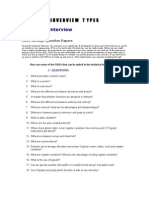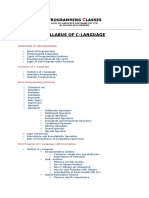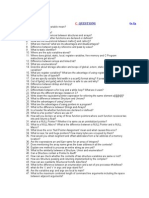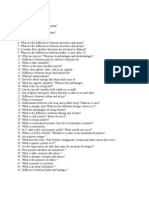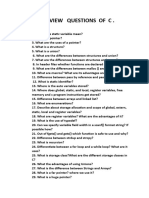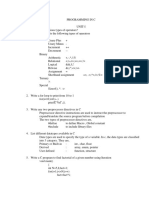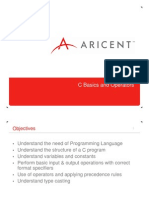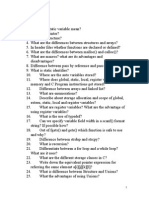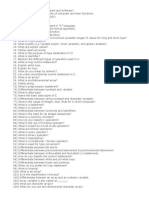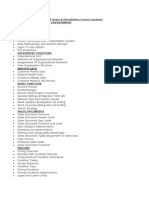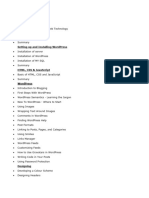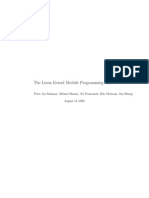0% found this document useful (0 votes)
112 views5 pagesC Language
This document provides an overview and syllabus for a C language training course. The course is designed to provide participants with a solid foundation in C programming, whether they are beginners or have some experience. The syllabus covers fundamental C programming concepts like data types, operators, control flow, functions, pointers, arrays, strings, structures, file handling and more. It aims to equip students with the knowledge and skills required to write efficient and effective C code.
Uploaded by
prr technologiesCopyright
© © All Rights Reserved
We take content rights seriously. If you suspect this is your content, claim it here.
Available Formats
Download as PDF, TXT or read online on Scribd
0% found this document useful (0 votes)
112 views5 pagesC Language
This document provides an overview and syllabus for a C language training course. The course is designed to provide participants with a solid foundation in C programming, whether they are beginners or have some experience. The syllabus covers fundamental C programming concepts like data types, operators, control flow, functions, pointers, arrays, strings, structures, file handling and more. It aims to equip students with the knowledge and skills required to write efficient and effective C code.
Uploaded by
prr technologiesCopyright
© © All Rights Reserved
We take content rights seriously. If you suspect this is your content, claim it here.
Available Formats
Download as PDF, TXT or read online on Scribd
/ 5






